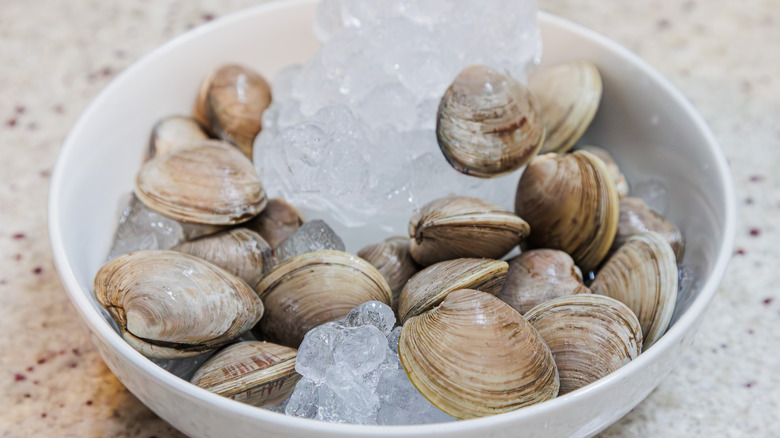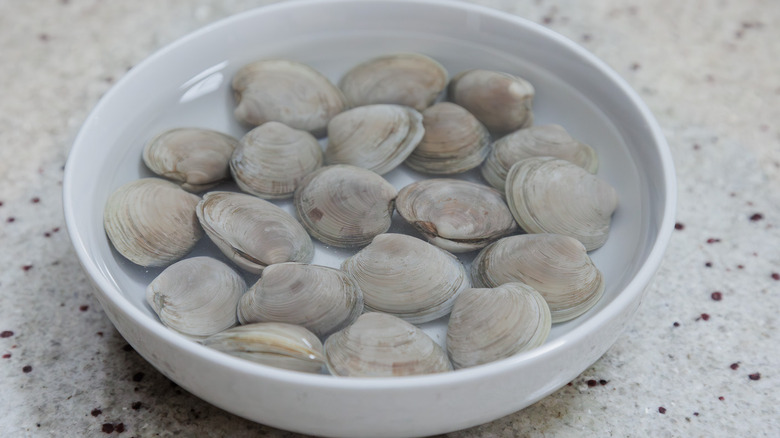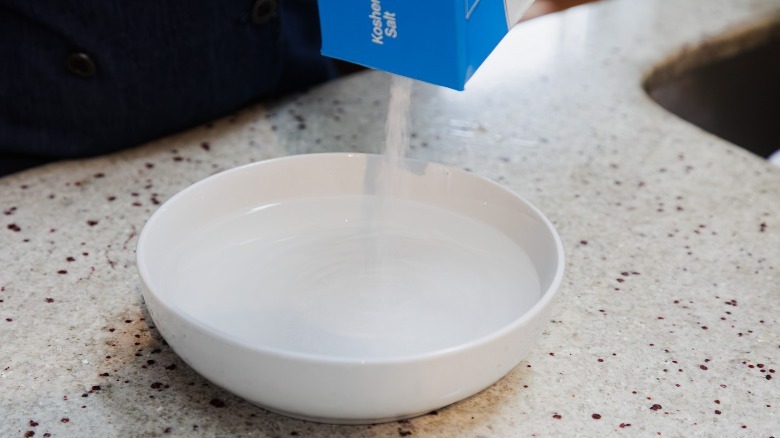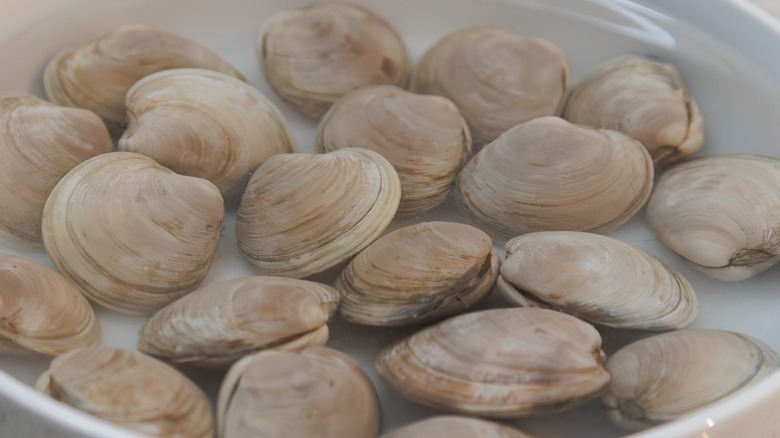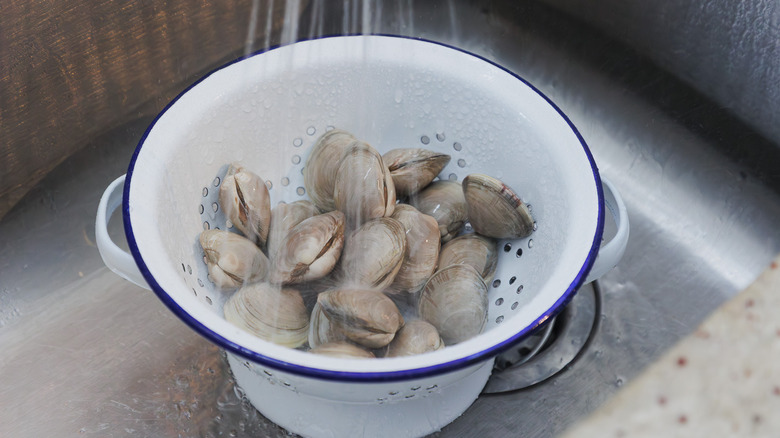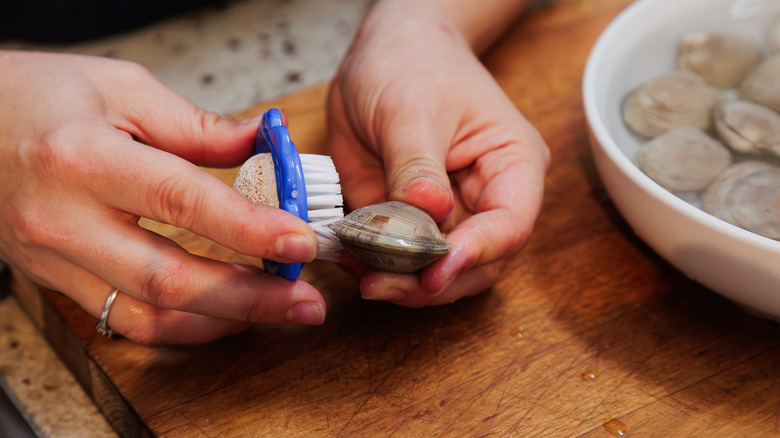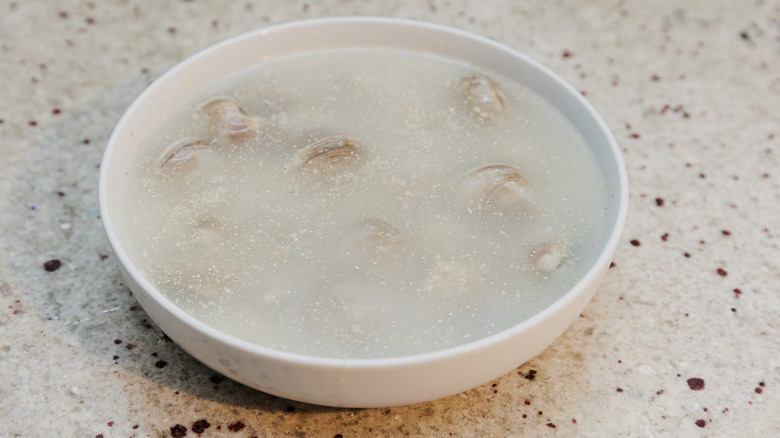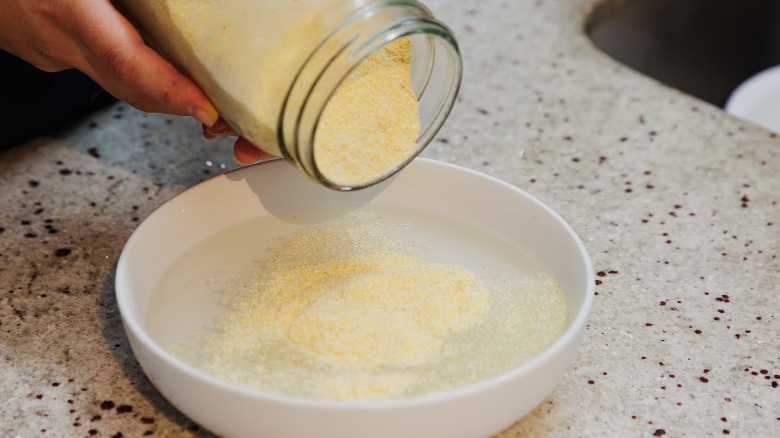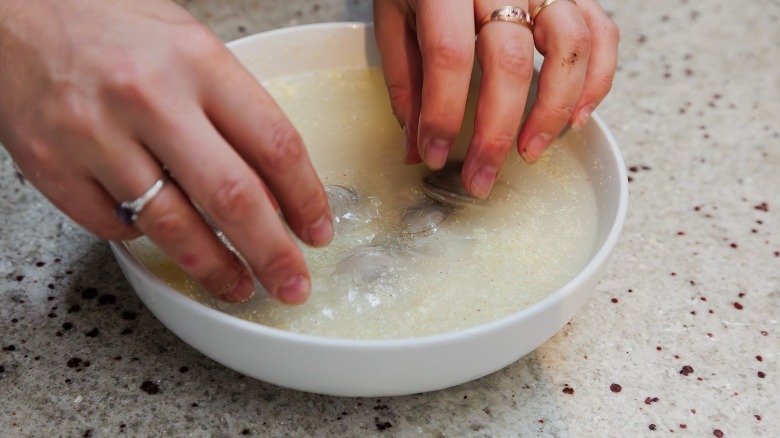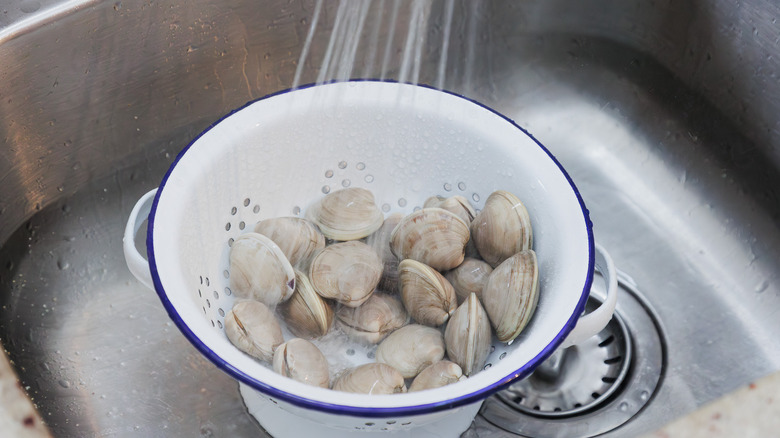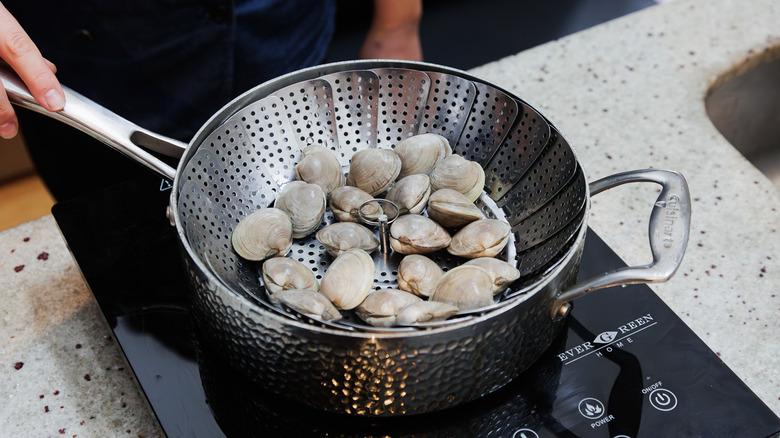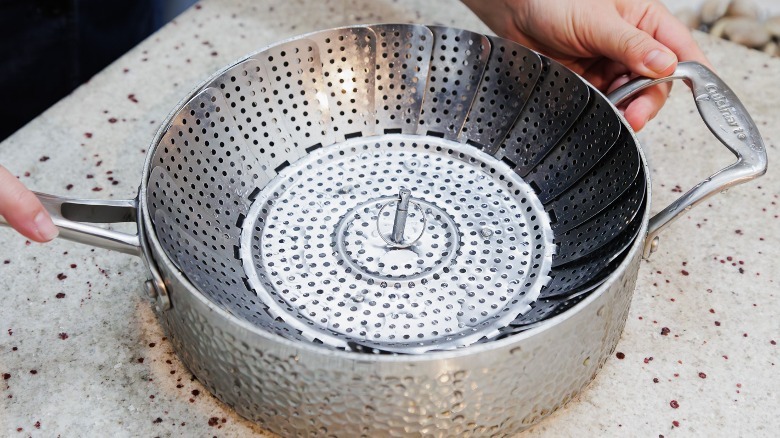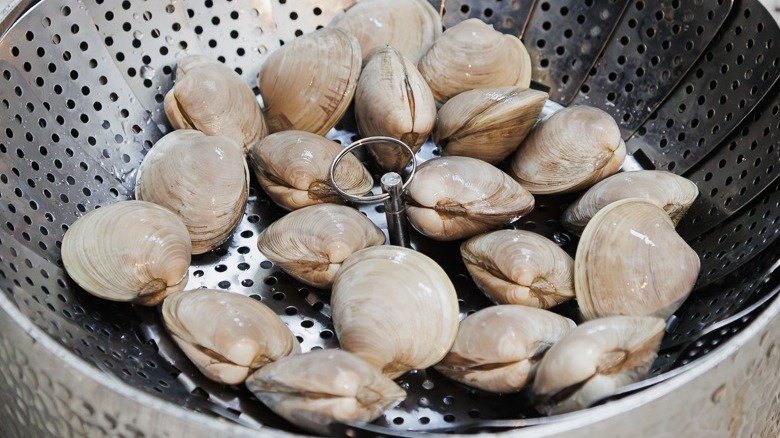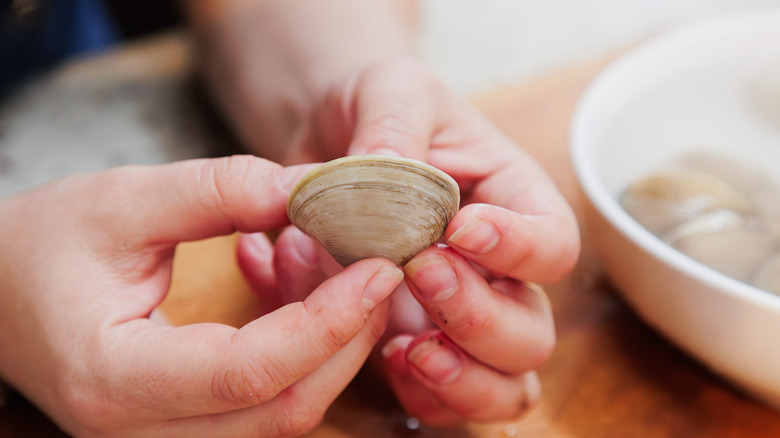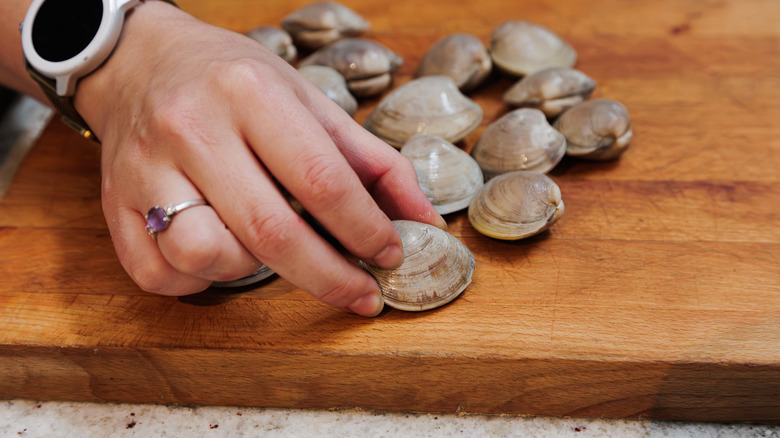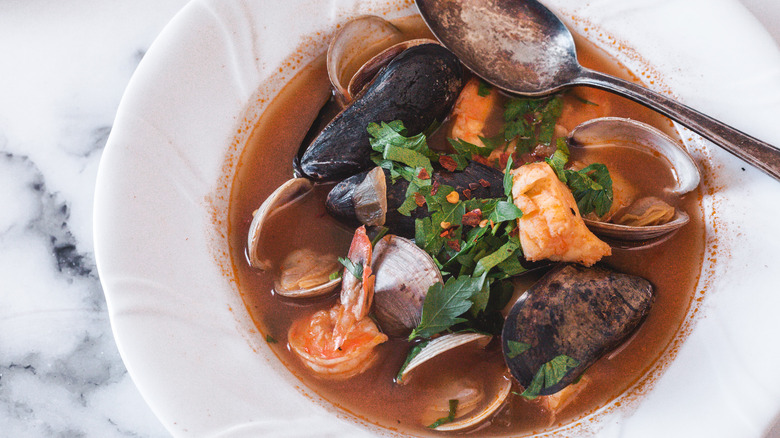How To Clean Clams For A Grit-Free Dish
Clams are the key ingredient to a world of international flavors, from brothy French soups to heaping bowls of steaming pasta, or even deep-fried and breaded appetizers. But cleaning them can seem like a daunting task that is not for the faint of heart — unless you know what you're doing, of course.
Clams — not to be confused with mussels — are bivalve mollusks that can add a delicious seafood flavor to many dishes. They come in several sizes, and even soft versus hard shells. The challenge lies in the fact that clams naturally filter water and sand through their bodies in order to extract their food, which can accumulate inside their shells. Because of this, these shellfish often come with an unwanted extra: sand and grit. Cleaning clams properly is the first and necessary step to any recipe, so that one can actually enjoy the taste of their food without the unpleasant crunch of sand between your teeth. Properly cleaned clams can elevate a dish from good to great, but the process requires patience and attention to detail. The good news is, it's also rather easy.
This guide will walk you through the steps to effectively clean your clams, removing sand and debris while preserving their fresh, briny flavor. With a bowl, a scrubbing brush, and a few changes of water, these techniques will help you achieve a grit-free meal that lets the true taste of the clams shine through.
Soak clams in salt water
Fill a large bowl with cold water and add ⅓ cup of salt per quart of water.
Submerge the clams in this saltwater solution for 30 minutes to an hour. This process encourages the clams, which are living creatures, to expel sand from inside their shells.
Rinse under running water
After soaking, drain the clams into a colander and rinse them thoroughly under cold running water. This washes off the salt, and helps remove the loose sand from the shells' exterior.
Scrub the shells
Using a stiff brush or a clean scouring pad, gently scrub each clam's shell to remove any stubborn dirt or debris. Pay special attention to the crevices and ridges on the shell's surface, as stubborn debris can get stuck in them.
Soak in water with cornmeal
Small clams tend to be easier to clean, while large clams hold more grit and, therefore, can take longer to clean. If your clams are particularly gritty, mix about ⅓ cup cornmeal into a quart of water in a large bowl. The cornmeal will act as a magnet for sand particles, helping pull out those errant stragglers from their hiding places.
Soak the clams in this solution for 2-3 hours.
Rinse the clams again
After the cornmeal soak, drain and rinse the clams once more under cold running water to remove any remaining cornmeal and expelled sand.
Steam the clams briefly
For extremely dirty clams, we need to pull out the big guns. Fill a pot with a small amount of water, and insert a steaming basket or rack in it.
Add the clams to the steamer, and steam them for about 2 minutes. Strain and rinse the clams, discarding the dirty cooking water. This quick steaming helps open the shells slightly, releasing more grit.
Inspect for grit
After cleaning, examine each clam individually. Look for any remaining sand or debris on the shell or around the opening. If you find any, give those clams an extra rinse or scrub.
Tap your freshly cleaned clams
Tapping clams is a crucial step in determining their freshness and safety for consumption. As we mentioned before, uncooked clams should still be alive. Tapping on the outer shell of a clam helps ensure that only live, safe specimens are used in your dishes.
When you tap a live clam on a hard surface, it will react to the stimulus by closing its shell tightly. This response is a natural defense mechanism, indicating that the clam is alive and healthy. On the other hand, if an uncooked clam remains open after being tapped, it's likely dead and should be discarded immediately. Dead clams can harbor harmful bacteria and toxins that multiply rapidly, posing significant health risks if consumed. Because clams can die between purchasing and cooking if stored incorrectly (for example, in an airtight container without the ability to breathe), make sure you do this test just before cooking.
What to cook with clams
Now that your clams are washed, scrubbed, and clean, they are ready for their debut in your kitchen. The good news is that there are plenty of delicious, clam-centric dishes you can now cook in your kitchen!
The most famous clam dish to any North American must be creamy clam chowder. This famous New England dish has fans across the nation, and plenty of people ready to throw down over their favorite recipe. If you'd like a less controversial soup, try American Italian cioppino, popularized by tired fishermen looking to utilize the remaining catch of the day.
If the weather is too hot for soup, perhaps it's time to throw those clams on the grill as part of the summer cookout. Or if you're into pasta, try the ubiquitous linguine and clams, perhaps served alongside clams casino for the ultimate high-and-low meal combination.
Whether you fry, steam, grill or pan-sear clams, there is no shortage of ways to cook this delicious seafood.
